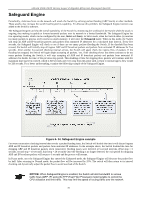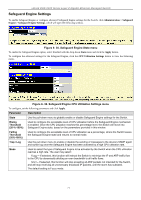D-Link DGS-3426 User Manual - Page 89
Routing Table, IPv4 Static/Default Route Settings
 |
View all D-Link DGS-3426 manuals
Add to My Manuals
Save this manual to your list of manuals |
Page 89 highlights
xStack DGS-3400 Series Layer 2 Gigabit Ethernet Managed Switch Routing Table The Switch supports only static routing for IPv4 and IPv6 formatted addressing. Users can create up to 128 static route entries for IPv4 and IPv6 combined. Manually configured static routes can route IP packets, and the local route also can route IP packets. For each device that is a part of the DGS-3400 network, users may only configure one IP address as a static route. For IPv4 static routes, once a static route has been set, the Switch will send an ARP request packet to the next hop router that has been set by the user. Once an ARP response has been retrieved by the switch from that next hop, the route becomes enabled. If a response is not received from the next hop device after three ARP requests have been set, the configured static route will remain in a link-down status. The Switch also supports a floating static route, which means that the user may create an alternative static route to a different next hop device located in the other network. This secondary next hop device route is considered as a backup static route for when the primary static route is down. If the primary route is lost, the backup route will uplink and its status will become Active. IPv4 Static/Default Route Settings Entries into the Switch's forwarding table can be made using both MAC addresses and IP addresses. Static IP forwarding is accomplished by the entry of an IP address into the Switch's Static IP Routing Table. To view the following window, click Administration > Routing Table > IPv4 Static/Default Route Settings. Figure 6- 42. Static/Default Route Settings window This window shows the following values: Parameter Description IP Address Subnet Mask Gateway The IPv4 address of the Static/Default Route. The corresponding Subnet Mask of the IP address entered into the table. The corresponding Gateway of the IP address entered into the table. Metric Represents the metric value of the IP interface entered into the table. This field may read a number between 1-65535. Protocol Represents the protocol used for the Routing Table entry of the IP interface. Backup State Represents the Backup state for which this IP interface is configured. This field may read Primary or Backup. Delete Click the button to delete this entry from the IPv4 Static/Default Route Settings table. To enter an IP Interface into the Switch's IPv4 Static/Default Route Settings window, click the Add button, revealing the following window to configure. 75















